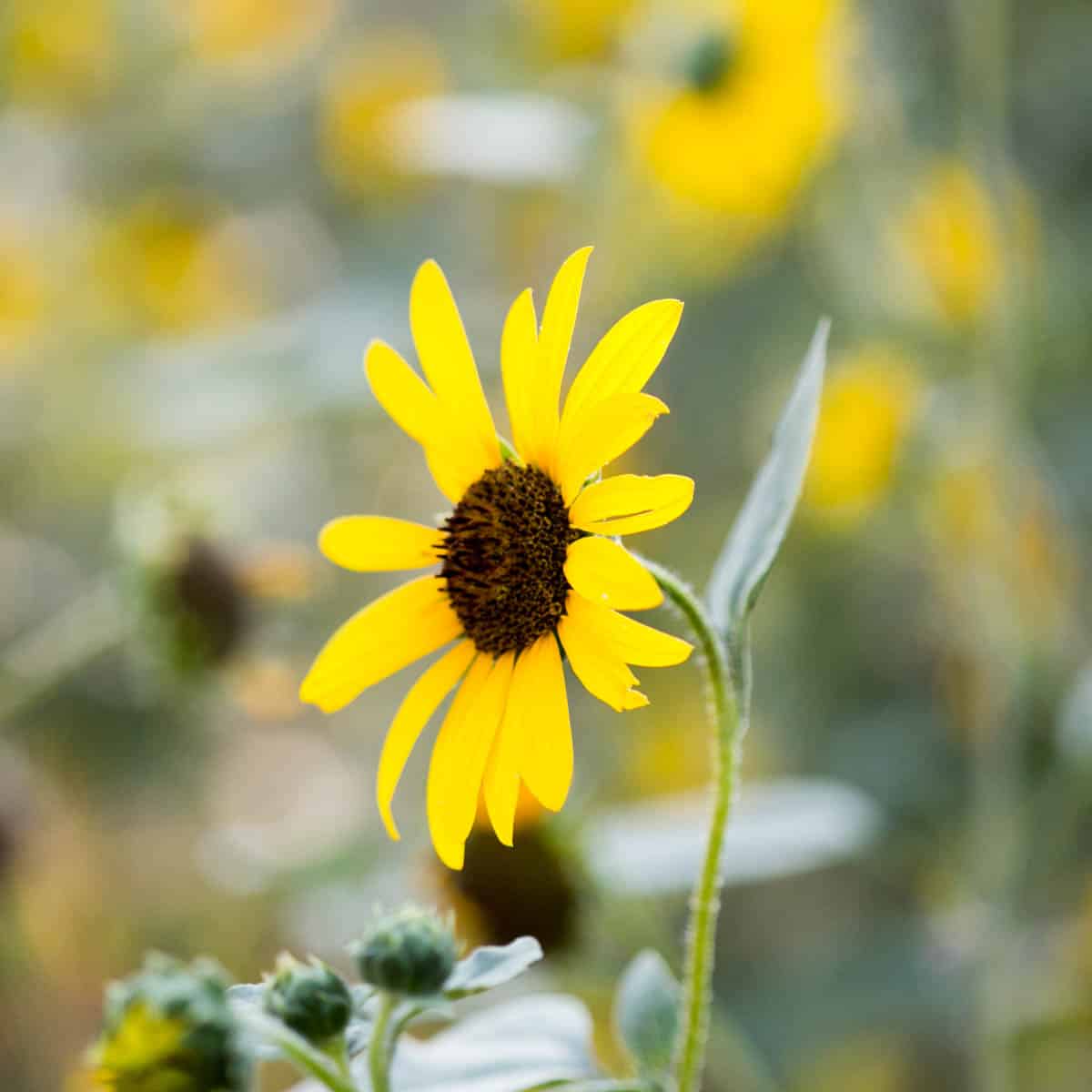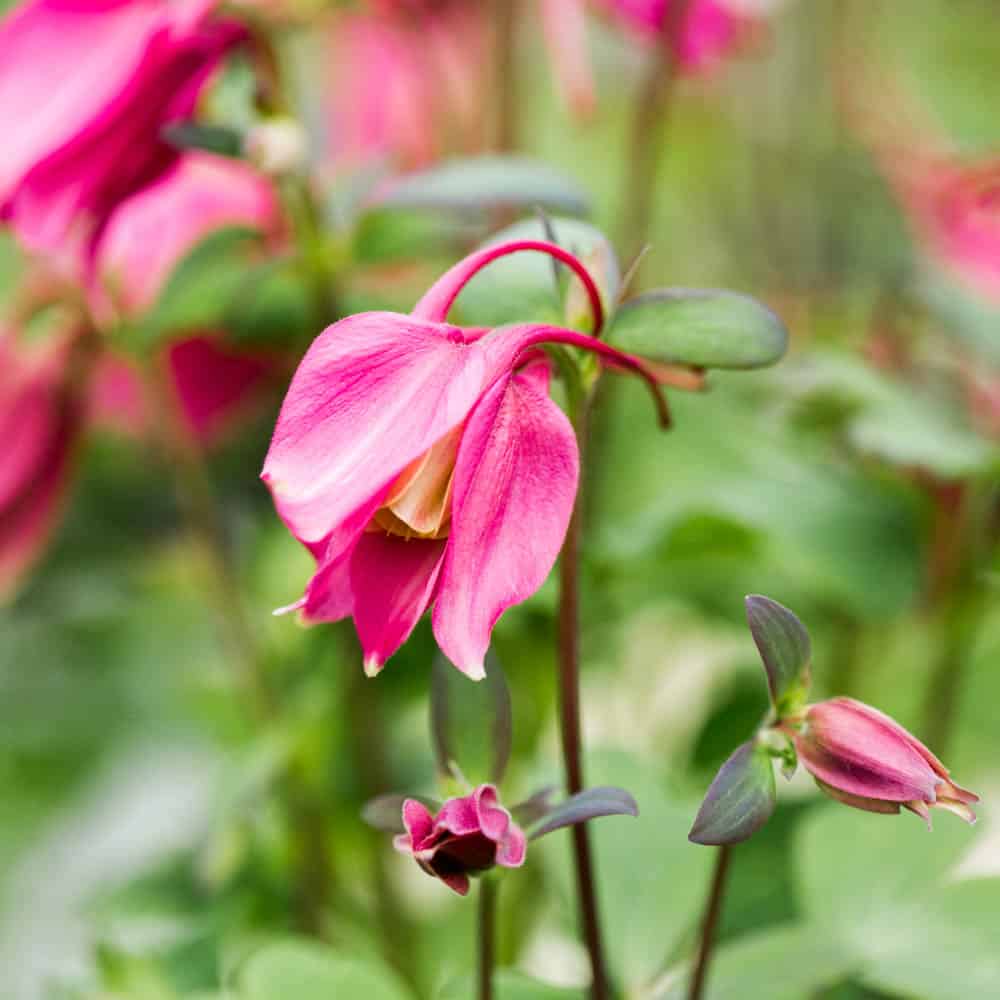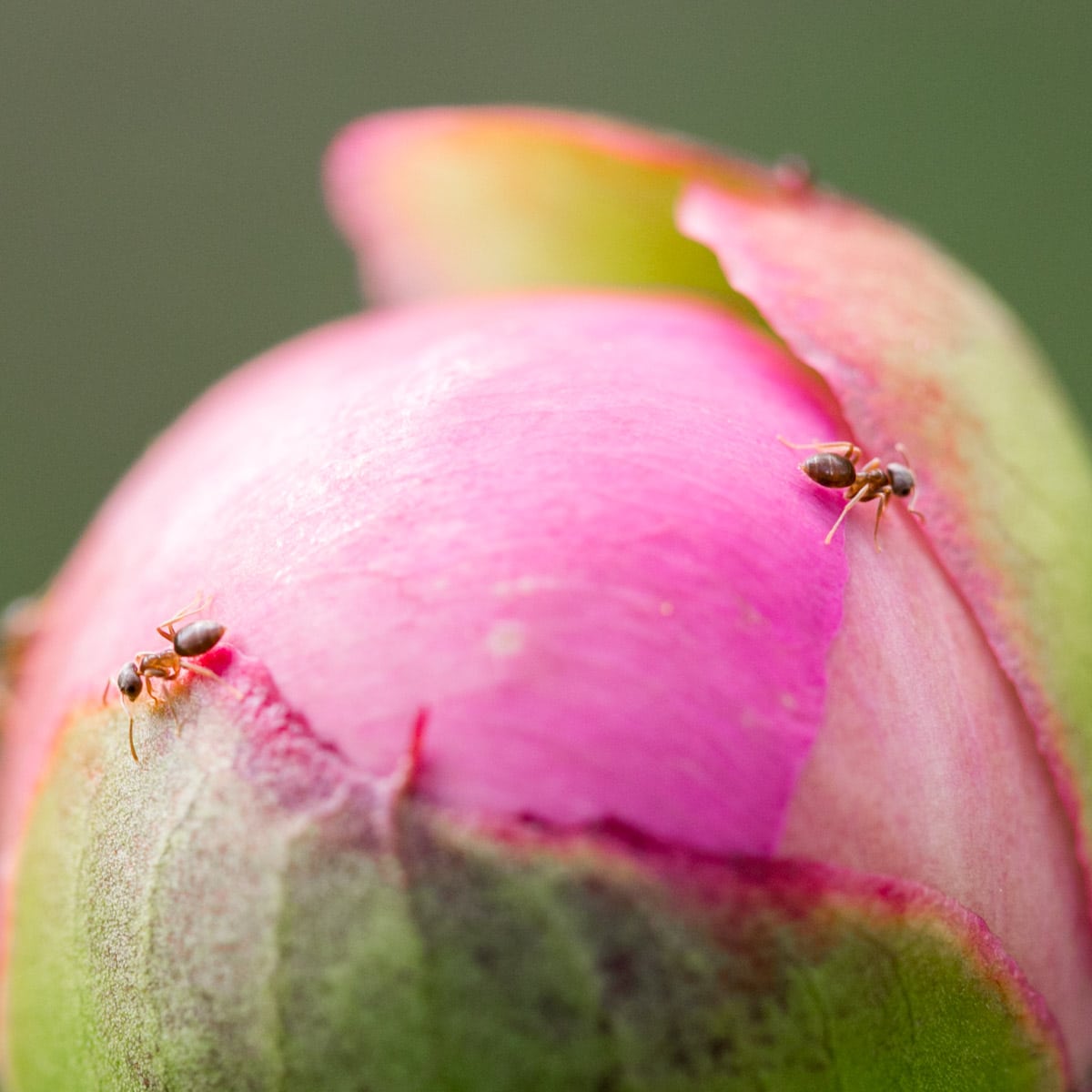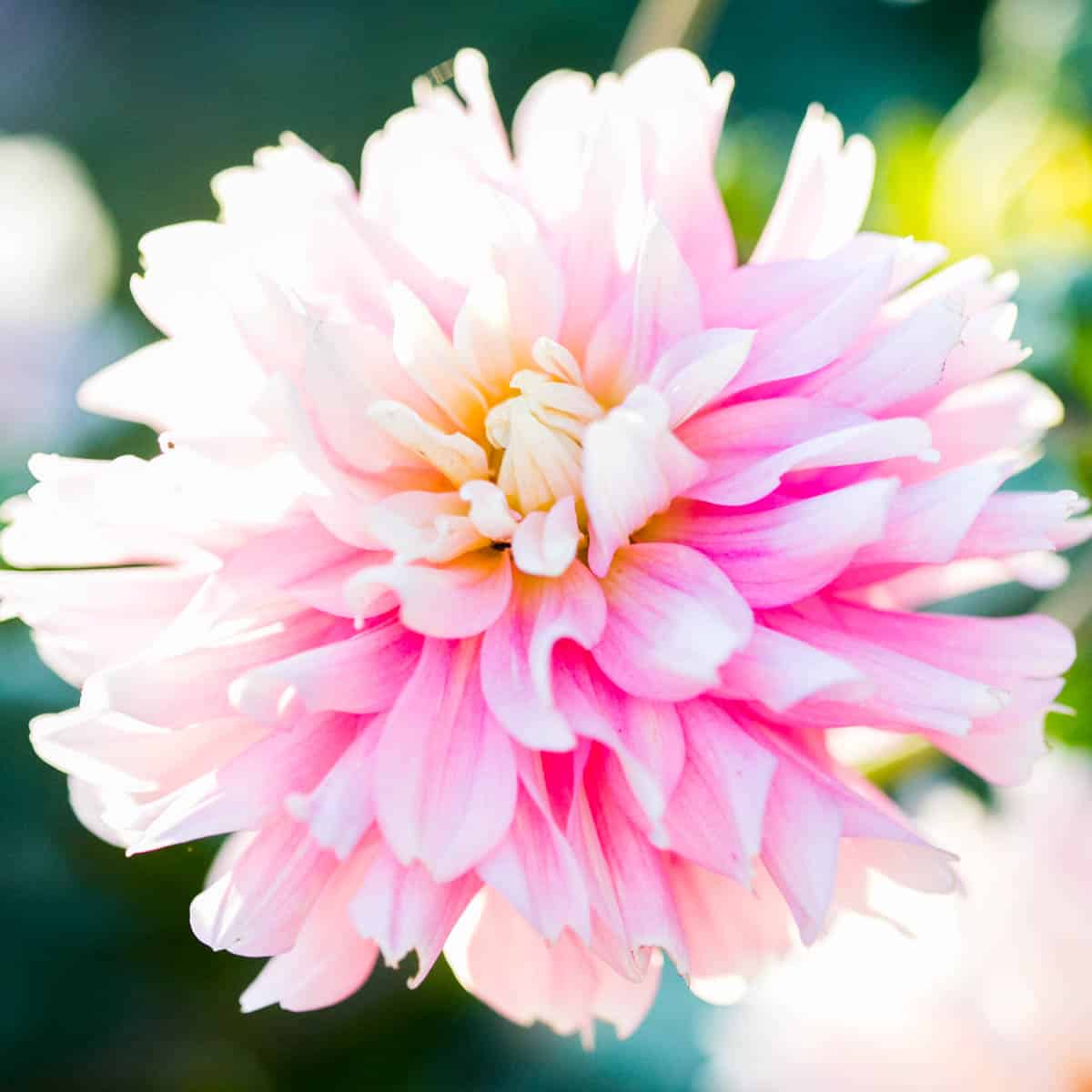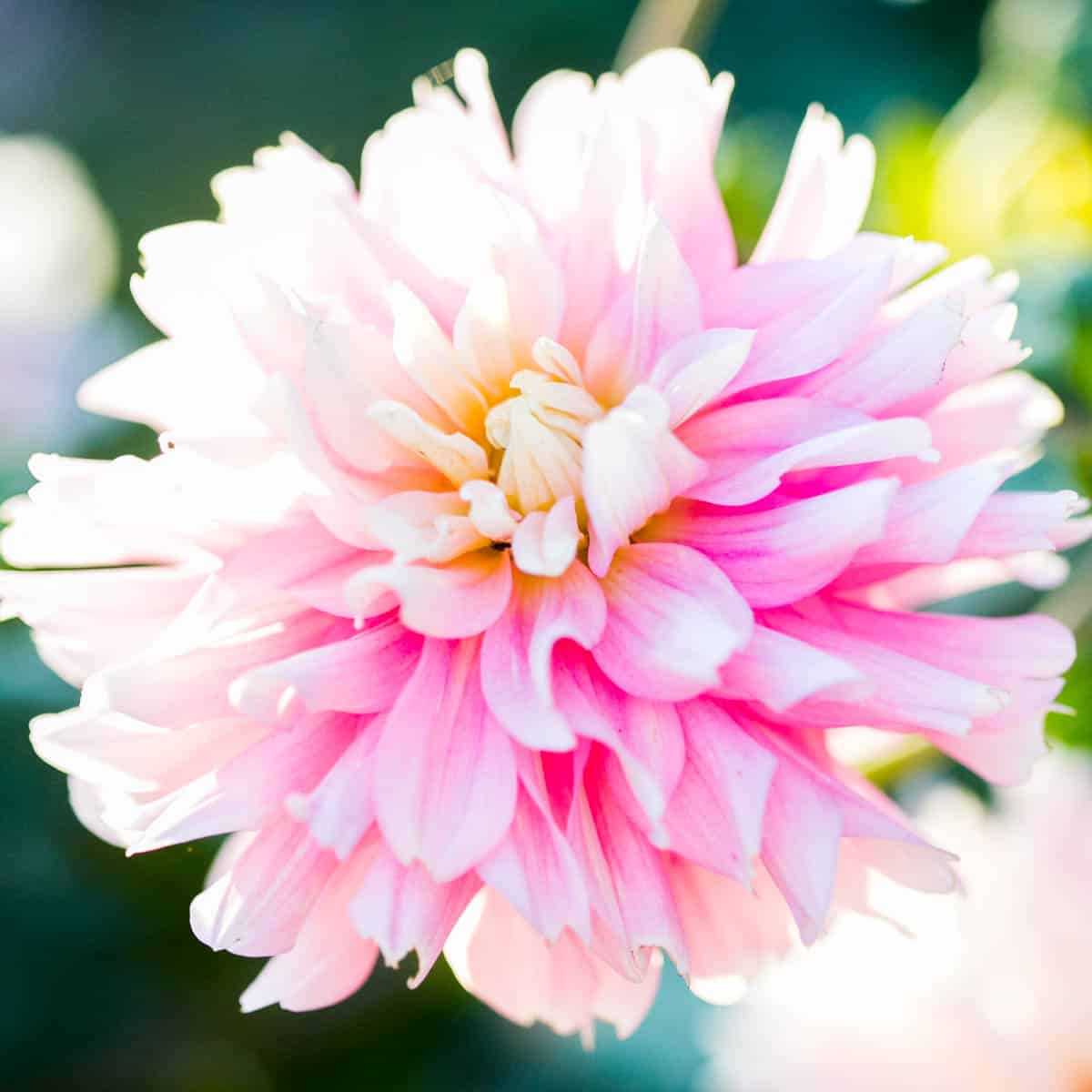How And When To Plant Tulip Bulbs
Temperatures are dropping and fall is in the air, which means it’s time to plant tulip bulbs! This complete guide will show you how.
Tulips push their way towards the sun in early spring and delight us with beautiful blooms. Grown from a bulb hidden deep within the ground, they are a delightful way to celebrate the end of winter and brighten up the spring flower beds.
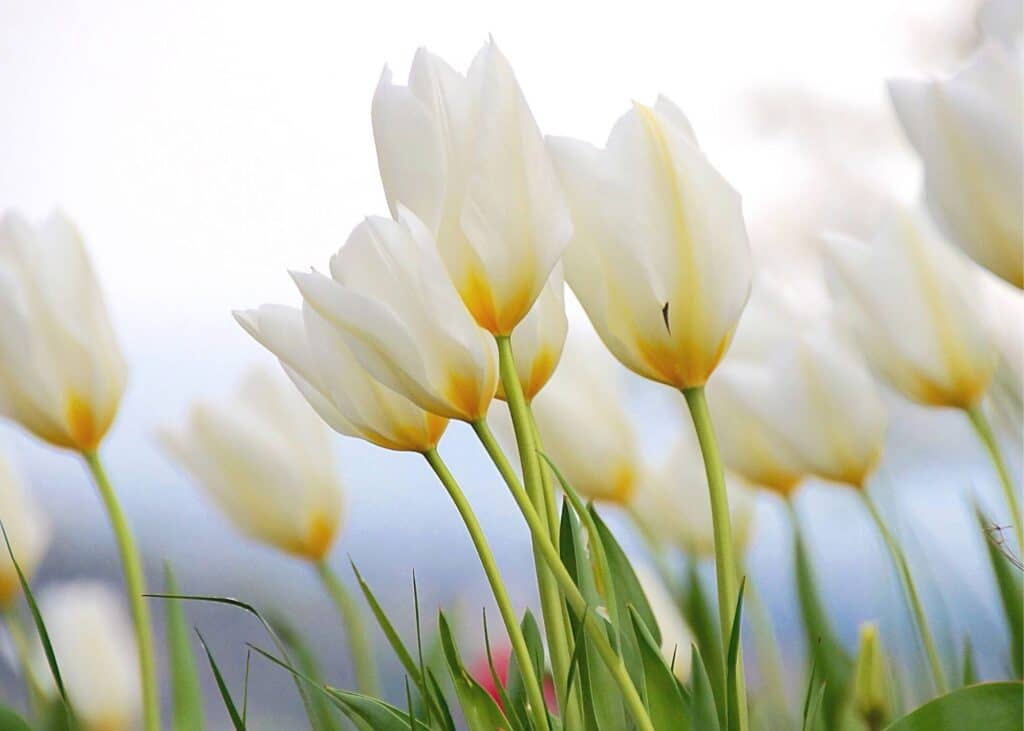
These gorgeous spring blooms come in many shapes and colors, some with traditionally pointed flower heads and others with large ruffled petals resembling peonies. They are planted in the fall and then burst into color the following year.
Given the right conditions, tulips are easy to grow and make an excellent cut flower.
How To Plant Tulip Bulbs
Find a location with at least 6 hours of sun, with soil that drains easily (no standing water). Dig a large planting hole 5 to 7 inches deep and place bulbs in the hole 4 to 5 inches apart. Water well and then cover with soil.
- How Deep: Plant bulbs 5 to 7 inches deep (for smaller bulbs, plant them two and a half times the depth of their height)
- How Far Apart: Set bulbs 4 to 5 inches apart
- Sun: Full: At least 6 hours
- Soil: Loose, well draining and fertile
Is it that simple? Yes, but we’ve got detailed steps covered in the rest of this article!
This post contains affiliate links. If you click through and make a purchase, we may make a small commission at no extra cost to you.
Planting Time (Best Time Of Year)
The best time of year to plant tulip bulbs is during the fall months: October through December. The tulip flowers will emerge the following spring.
Specific planting times depend on the zone a person lives in. Mid to late autumn is the best time to plant tulips, about 4 to 6 weeks before the first hard frost when the ground freezes.
These spring blooming flowers need cold temperatures and moisture to grow their roots over winter. Soil temperature needs to be below 60 degrees at a depth of 6 inches.
For accurate timing of planting check out your USDA hardiness zone here.
Typical Tulip Bulb Planting Times Based On Zones:
- Zone 1-3: Plant in late September to October
- Zone 4-5: Plant in late September to early November
- Zone 6-7: Plant in October to Mid December
- Zone 8-10: Pre chill tulip bulbs by placing in refrigerator for 6 weeks, then plant in December.
If you are still unsure about your local planting timeline, stop by a gardening center and ask to talk to a regional expert. These individuals have experience specific to your area and climate.

Tulips can be planted alongside other spring-flowering bulbs such as hyacinth, daffodils and ranunculus!
Sunlight
Tulips prefer a location with full sun, although a bit of partial shade in the afternoon will work okay as well. For best results look for an area that will receive at least 6 hours of bright and direct sun.
Water
After planting, water tulip bulbs well. You should not need to water again unless you live in an arid, dry place.
Fertilizer
We typically use bone meal when planting bulbs because it is rich in nutrients that aid root development. Add one to two tablespoons to the soil before planting.
Soil
Choose a planting site with well draining loose soil for your flower bulbs. Soil should be fertile, loose and slightly sandy.
Good drainage is very important to prevent water from sitting on the bulbs and causing them to rot. A great location would be a spot that has a slight slope to help with drainage and consists of loose, well-drained soil.
Heavy clay soil and soggy soil will cause tulip bulbs to rot. If needed, amend your soil with organic matter and peat moss, which helps with drainage.

Tulip Planting Guide + Bulb Spacing
Now it’s time for the fun part- digging and planting! There are two specific planting styles that are commonly used, based on how far apart the bulbs are spaced.
- Traditional planting: Traditionally, gardeners plant bulbs 4 to 5 inches apart, giving each bulb space to grow roots and breathe. Planted in this way, there are 5 to 6 bulbs per square foot.
- Planting In Groups: Tulips can also be planted in groups, with the bulbs close together but not touching (like eggs in a basket). These tulip plants will grow in clumps, and the stems tend to grow taller and longer-yielding long, beautiful flowers. This is a great method for growing cut flowers and is often used by commercial growers in trenches.
We will go through each method here with photos.
Which Way Up?
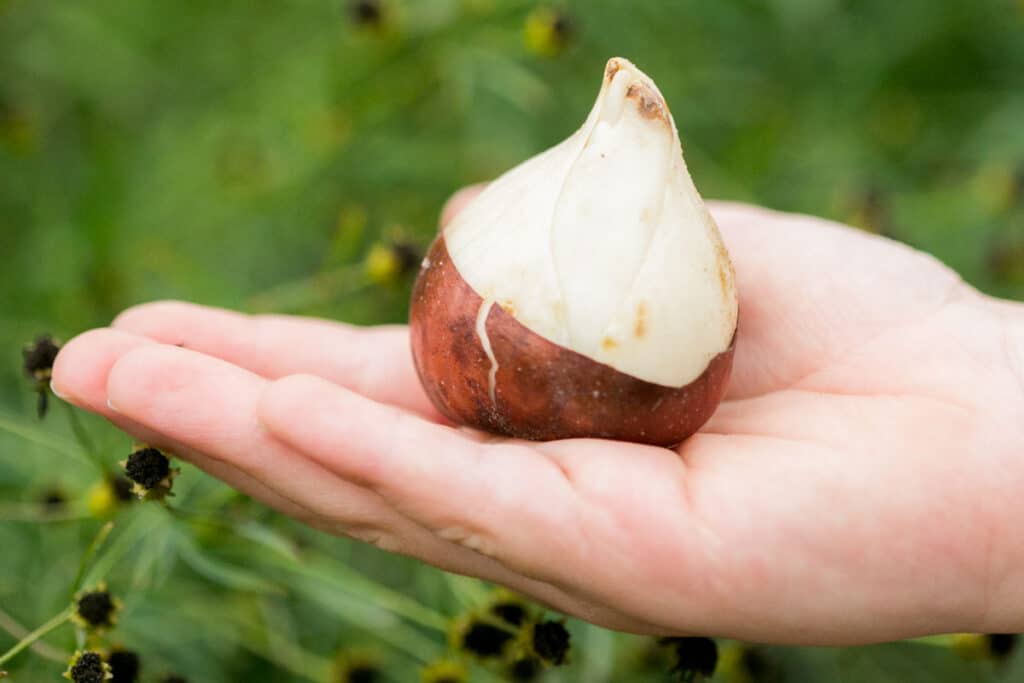
There are two sides to these beautiful bulbs: a pointy top and a flat bottom.
Always make sure that the pointy end of your tulip sticks up! If you put the round end up you are planting the bulb upside down, and you won’t get a very pretty bloom that way.
Traditional Planting Method

Normal planting methods space tulips out about 4 to 5 inches apart, so plan accordingly. You can get a visual for how large of a hole you need by placing your bulbs on top of the soil prior to digging the hole (remove bulbs before digging!).
Dig a large hole about 7 inches deep.
The bulb should sit between 5-7 inches deep. The depth of the bulb is 7 inches and the height of the bulb was at 5 inches deep. We spaced these bulbs 4 to 5 inches apart.

A good rule of thumb is to plant the bulb twice as deep as it the bulb is tall.
Before placing the bulbs in their hole, we added a half a cup of bone meal and mixed it in with the soil. Bone meal will add extra phosphorous to the soil, which helps root growth, flowering, and overall health. You can also use a bulb specific fertilizer, if desired.
Cover with dirt and give the bulbs a nice drink of water. Label the spot where the tulips were planted.
If you live in an area of plenty of rainfall you will not need to water again. In hot, dry climates water a few times per month over the winter.
Planting Tulips Close Together In Groups

Planting bulbs in groups close together will create a colorful and dramatic impact. The stems will be forced to grow longer, resulting in taller flowers.
This planting approach is often done in borders or for growers who sell tulips and need to grow a lot of flowers. We personally think this is the best way to plant tulips:
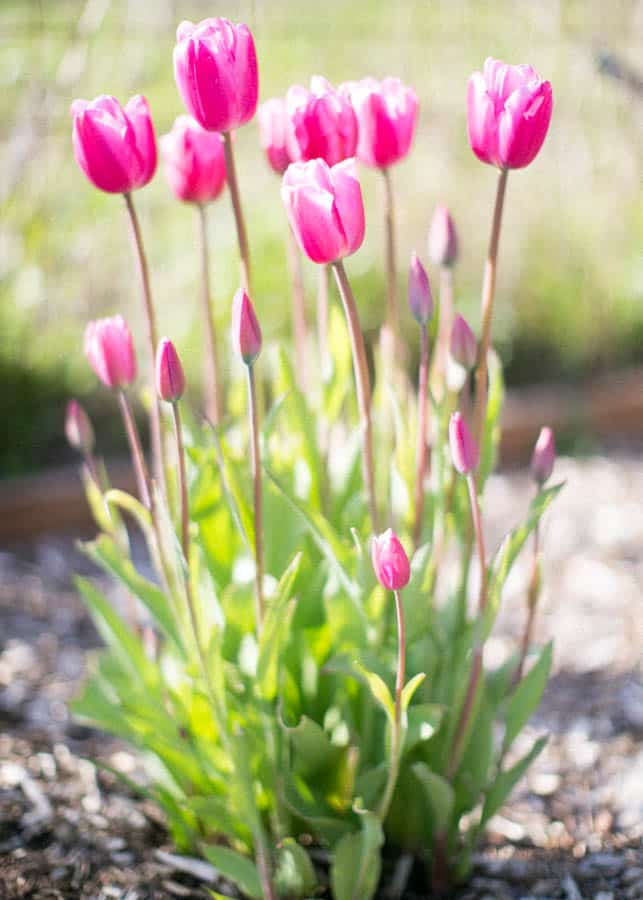
Start your planting process the same way as when you plant bulbs traditionally, digging a bulb bed about 7 inches deep and adding bone meal or bulb fertilizer.
Instead of planting your bulbs 4 to 5 inches apart, plant them right next to each other, like eggs in a basket. They can be quite close, less than an inch apart. Make sure they don’t touch each other.
Ensure that the bulbs are placed pointy side up, cover with dirt, then water in.

Now that you’ve planted your tulip bulbs, all you have to do is wait through the winter!
Just when you think you cannot take another moment of winter drear, a beautiful burst of color will arrive as tulips sprout through the earth and share their brilliant colors with you.
Learn what to do with the tulips when they are done blooming here.
Are Moldy Tulip Bulbs Still Good?
Mold and rot on tulip bulbs is a common problem, as bulbs are susceptible to fungal diseases. Make sure to observe each bulb before planting and only plant healthy bulbs.
A spoiled bulb with have spots of grey or brown rot, and be soft and mushy to the touch. If there is mold on the bulb, visible decay, or if it is mushy when you gently squeeze it, then toss the bulb!
It will be apparent the bulb is rotted. A healthy tulip bulb will withstand the pressure of light squeezing and feel firm and hard.
Sometimes bulb rot will occur on recently purchased bulbs that were not stored properly. Do not hesitate to ask for an exchange on these bulbs!

What Is Eating My Tulip Bulbs?
Deer, moles, rabbits, squirrels and many insects enjoy chomping on tulip bulbs. Before planting, inspect bulbs for insects, which may be boring into your bulbs and causing decay. Do not plant any that have been heavily damaged by insects.
Bulb mites are a common insect which will bore into bulbs and suck out the juices within, leaving them susceptible to rot. Discard any tulip bulbs affected by mites immediately.

susceptible to rot.
To prevent bulbs from being eaten by mice, moles and other critters:
- Place a layer of sharp rocks at the bottom of the hole prior to planting to prevent moles digging in
- Make sure you are planting deep enough to make it harder for critters to detect bulbs
- Lay a piece of chicken wire over the dirt once planted. Use rocks to hold the chicken wire in place. This will deter digging
Should Tulip Bulbs Be Soaked Before Planting?
No, there is no need to soak tulip bulbs before planting.
Best Place To Buy
Purchase new bulbs from garden centers, big box stores, and online from reputable growers like Holland Bulb Farms.
Types Of Tulips
There are over 3,000 tulip varieties to choose from. They come in many flower shapes, colors and heights.
Different varieties can give you different bloom times, which means you can get color all spring.

Darwin Hybrid are reliable perennial bloomers that are more likely to come back the next spring. Botanical tulips mimic wild varieties and feature small flower buds.
Some tulip varieties bloom in late spring. These varieties often have longer stems and ruffled petals. Some of these late spring varieties are Double or Single Late Tulips, Parrot Tulips, and Fringed Tulips.
Can You Plant Tulips In Late Winter?
Yes, you can plant tulip bulbs any time that the ground is still workable. Keep in mind that these flowers may have smaller blooms and shorter stems.
Keep these bulbs chilled in the refrigerator to give them the best chance at thriving!
Final Thoughts
Vibrant and colorful, tulips are one of the best spring flowers to grow. If you are planting bulbs this fall, we’d love to hear about it. Drop us a comment below and let us know how your bulb planting ventures go.
Happy planting! -Jamie, The Green Garden Cottage
Other fall articles we love:

